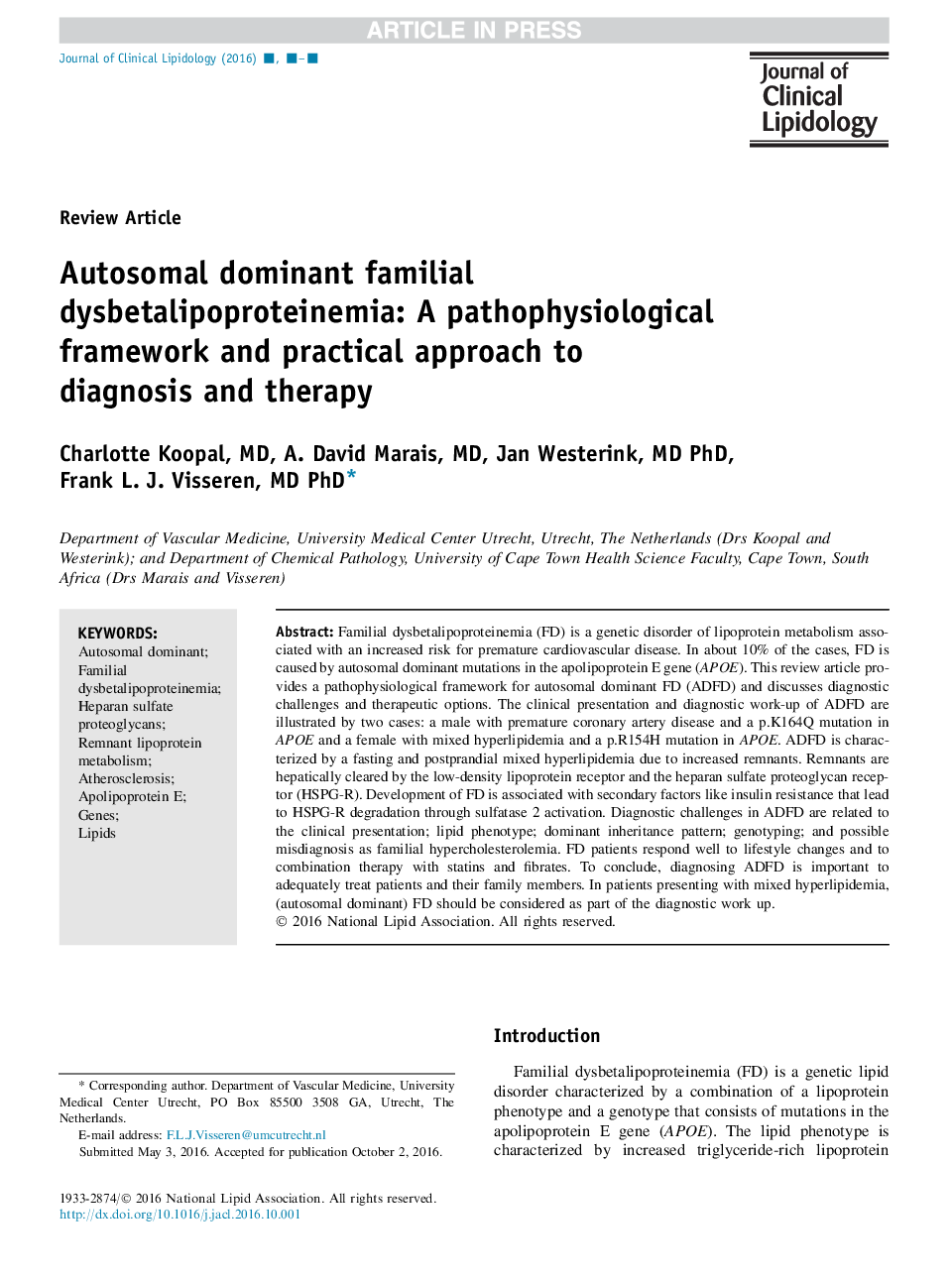| Article ID | Journal | Published Year | Pages | File Type |
|---|---|---|---|---|
| 5615353 | Journal of Clinical Lipidology | 2017 | 13 Pages |
Abstract
Familial dysbetalipoproteinemia (FD) is a genetic disorder of lipoprotein metabolism associated with an increased risk for premature cardiovascular disease. In about 10% of the cases, FD is caused by autosomal dominant mutations in the apolipoprotein E gene (APOE). This review article provides a pathophysiological framework for autosomal dominant FD (ADFD) and discusses diagnostic challenges and therapeutic options. The clinical presentation and diagnostic work-up of ADFD are illustrated by two cases: a male with premature coronary artery disease and a p.K164Q mutation in APOE and a female with mixed hyperlipidemia and a p.R154H mutation in APOE. ADFD is characterized by a fasting and postprandial mixed hyperlipidemia due to increased remnants. Remnants are hepatically cleared by the low-density lipoprotein receptor and the heparan sulfate proteoglycan receptor (HSPG-R). Development of FD is associated with secondary factors like insulin resistance that lead to HSPG-R degradation through sulfatase 2 activation. Diagnostic challenges in ADFD are related to the clinical presentation; lipid phenotype; dominant inheritance pattern; genotyping; and possible misdiagnosis as familial hypercholesterolemia. FD patients respond well to lifestyle changes and to combination therapy with statins and fibrates. To conclude, diagnosing ADFD is important to adequately treat patients and their family members. In patients presenting with mixed hyperlipidemia, (autosomal dominant) FD should be considered as part of the diagnostic work up.
Keywords
Related Topics
Health Sciences
Medicine and Dentistry
Cardiology and Cardiovascular Medicine
Authors
Charlotte MD, A. David MD, Jan MD, PhD, Frank L.J. MD, PhD,
